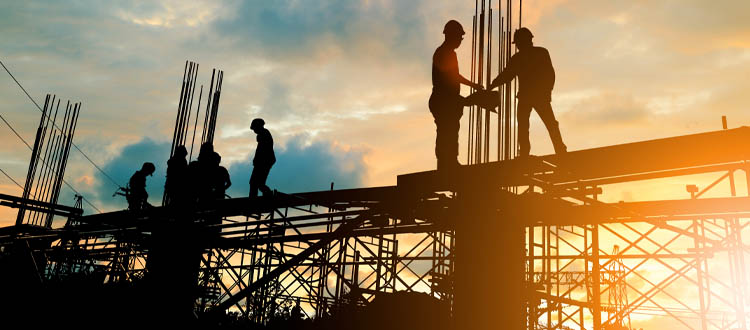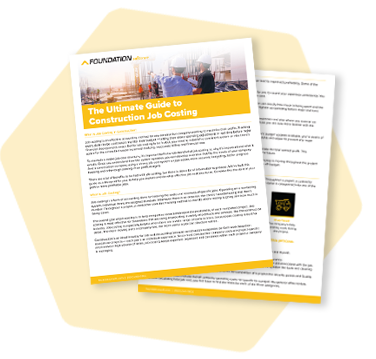
The first quarter of 2022 was a stressful time for commercial construction companies. Labor shortages and high material prices created delays at jobsites. The passing of the Inflation Reduction Act caused a rush of uncertainty among contractors since it wasn’t clear how this law would impact business.
However, against economists’ predictions commercial construction experienced both growth and profit. The number of project starts grew by a solid margin this year compared to 2021.[1] Employment for nonresidential and specialty trades increased.[2] Public works and data center construction flourished. And industry activity as a whole saw a 4% jump.[3]

For a year where commercial construction was expected to just ‘tread water,’ 2022 ended up being pretty successful. . . which makes 2023 harder to predict. There are still major conversations being had regarding a possible recession, yet construction companies aren’t pessimistic about the future. The most recent Marcum-Hofstra CEO Survey reported that half the CEOs they interviewed are taking a wait-and-see approach and less than half are concerned about a potential economic downturn.[4]
Recession preparation is incredibly important, and I don’t want that to be underplayed. But for this report, I’m interested in discussing why contractors are upbeat and optimistic about the next few months.
A few of my colleagues attended the national NECA conference and had the opportunity to talk with many owners of established commercial construction companies who also presented a positive outlook for 2023.
Below are some of the most repeated points referenced.
- Material Prices Are Sliding: After two long years of COVID-influenced pricing, material costs are stabilizing.[5] Raw materials are becoming more readily accessible and even with high energy prices and labor shortages, commodities such as lumber, copper and steel have all seen a drop in cost.[6] There are even predictions that material distribution is entering into a buyer’s market as the supply chain turmoil that plagued early 2022 settles.
- Consumer Spending has Increased: There’s still quite a demand for commercial construction work, and it has steadily grown over the past few months. Hotels, data centers, airport terminals and healthcare buildings have been some of the biggest contributors to the increasing percentage.[7] But most sectors of commercial work have seen a surplus in projects: metropoles want more infrastructure; cities are revamping transportation hubs, and states are welcoming new divisions of industries that all require updated buildings.
The growth in spending isn’t just concentrated in low to medium-sized profit opportunities either. The U.S has been home to multiple billion-dollar endeavors throughout 2022, including one here in Ohio — the Intel Semiconductor plant in Jersey Township.
- Weekly Hours Worked Remained Consistent: Traditionally, construction work can be a little unpredictable, but in 2022, laborers were able to remain employed at a consistent rate. Even in seasonally dependent trades, unavailable work during the off-season became available at a high-volume during peak months. Workers needing full-time hours received them more easily than in previous years and over-time opportunities were more available. The unemployment rate for the nonresidential construction industry hit one of its lowest points in years.[8]
- Project Starts Almost Doubled 2021 Numbers: According to mid-year reports, the number of commercial construction projects that broke ground in 2022 was 37% higher than in 2021 — signifying that consumers are more recovered from pandemic instability than they were a year ago.[9] Some economists are estimating an almost 10% increase in overall project starts by the end of December.[10]
- The Federal Government is Investing: With the passing of both the Infrastructure Investment and Jobs Act (IIJA) and the Inflation Reduction Act, different sectors of the commercial construction industry are receiving a high level of investment from the government. The more money invested, the more jobs available. And government work is recession-proof work.
I recognize that the funds from the IIJA are being distributed at what feels like a slow pace. However, the White House recently released an overview of the distribution plan, and the goal is to have most of the money circulating to the states by the end of 2022 into early 2023.[11] The demand for new and revamped infrastructure will then increase come the new year.
Another major factor contractors are taking into consideration is the past year in and of itself. Construction companies spent at a moderate level while material costs stayed at a substantial rate. Yet there was expansion into new fields, growth in employment and overall profit in the industry. It’s been a weird year and we may yet experience a weird start to 2023, but — at least for now — weird doesn’t indicate loss or failure.

The best advice I can give right now is to echo the advice I’ve been offering all year: pay attention and get or stay prepared. Figure out where your cash flow is, create a plan to manage your debt and check your balance sheets often. Also, research the data — know how the ever-changing industry is flowing and operating at any particular moment.
A recession isn’t guaranteed, and commercial contractors are hopeful. But preparation is always key to a safe landing regardless of what happens.
[1] Zevin, Alisa. (2022). Material Prices Slide Amid Unsteady Market. Engineering-News Record. https://www.enr.com/articles/54876-material-prices-slide-amid-unsteady-market.
[2] Conerly, Bill. (2022, October 25). Non-Residential Construction Forecast: Slowing 2023-2024. Forbes Magazine. https://www.forbes.com/sites/billconerly/2022/10/25/non-residential-construction-forecast-slowing-2023-2024/?sh=1e5b48b7e630.
[3] Ibid.
[4] (2022). Marcum-Hofstra CEO Survey. Marcum-Hofstra CEO Survey. https://www.marcumhofstraceosurvey.com/no4-2022.
[5] Zevin, Alisa. (2022). Material Prices Slide Amid Unsteady Market. Engineering-News Record. https://www.enr.com/articles/54876-material-prices-slide-amid-unsteady-market.
[6] (2022, August 4) Linesight US Commodity Report – Q2 2022. Linesight. https://www.linesight.com/insights/linesight-us-commodity-report-q2-2022/.
[7] Ibid.
[8] (2022). U.S Bureau of Labor Statistics. https://data.bls.gov/timeseries/LNU04032231?amp%253bdata_tool=XGtable&output_view=data&include_graphs=true.
[9] Gavin, Jeff. (2022, July 15). The Economy is a Fighter: The midyear 2022 construction forecast. Electrical Contractor. https://www.ecmag.com/section/your-business/economy-fighter-midyear-2022-construction-forecast#:~:text=Year%2Dto%2Dyear%20(May,)%20(see%20Figure%201).
[10] Ibid.
[11] Obando, Sebastian. (2022, August 18). The Most Recession-Proof Sectors for Construction. Construction Dive. https://www.constructiondive.com/news/most-least-recession-proof-construction-sectors/629981/.
Share Article
Keep on current news in the construction industry. Subscribe to free eNews!
Learn about our software more in depth with product overviews, demos, and much more!

Our ACA reporting & e-filing services include official 1094-C and 1095-C IRS reporting, optional e-filing (no applying for a TCC code required), mailing to your employees and experienced support to help you.

There are plenty of reasons to make FOUNDATION your choice for job cost accounting and construction management software — just ask our clients!

From job cost accounting software, to construction-specific payroll. Get an overview on your next all-in-one back-office solution.



